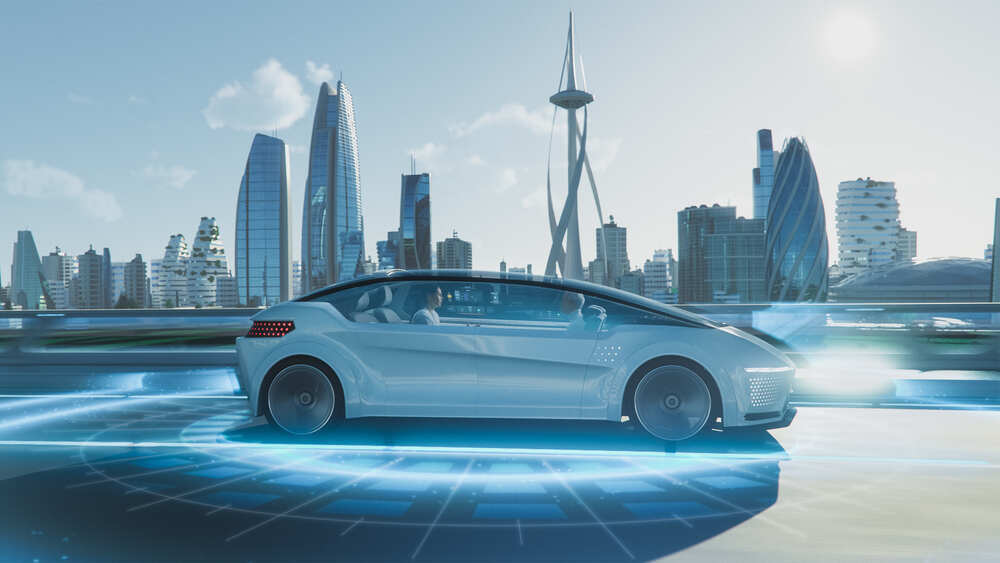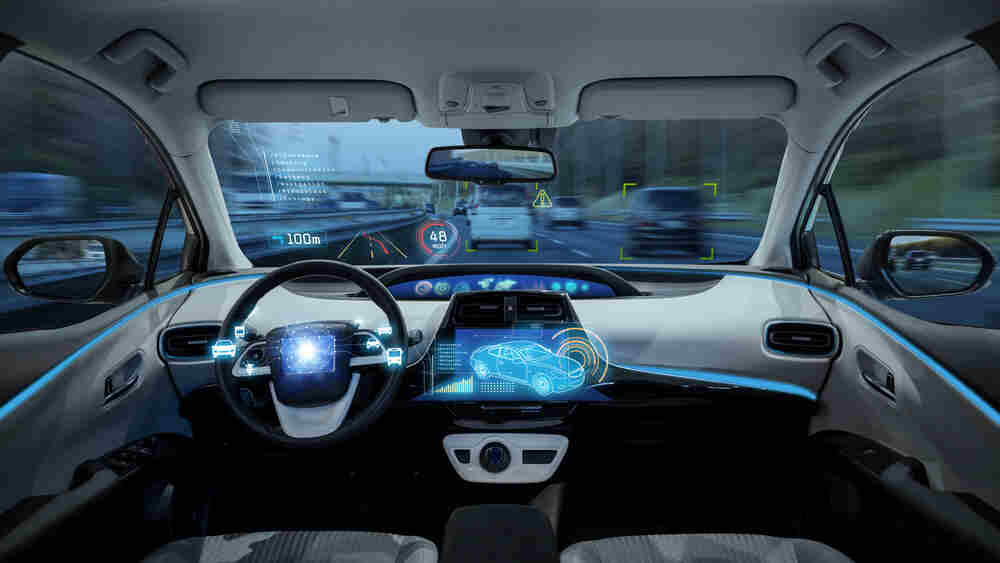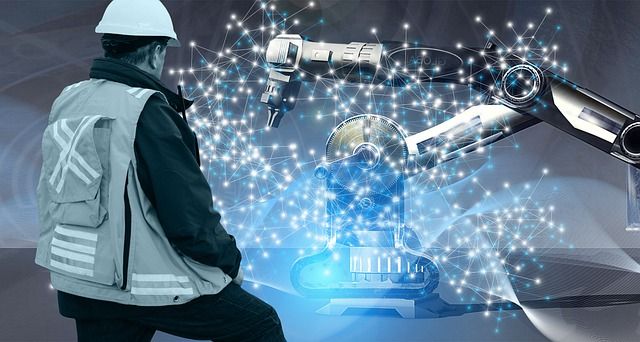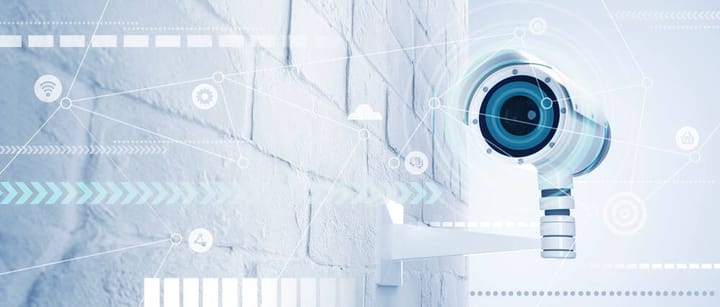AI-Driven Robot Cars: Driving into the Future
AI-driven robot cars offer a wide range of capabilities for the smart driving future. So, discover the world of AI-based self-driving cars in our article and their impact on transportation. We have also curated the list of companies manufacturing smart cars with the power of AI. Let’s explore!

Are you at this time in search of AI-driven robot cars? If yes, then think how far technology has come. So why not in the field of automobiles? Welcome to the world of robotic cars. The head of the Robotic Federation, Marina Bill, said, “Nowadays, robots are playing a great role, especially in the automated industry. Robots are helping in switching the industry from burning engines to electric power. She further added that this automation will greatly help in terms of long-established methods”. So, a robotic car is an AI-based self-driven/autonomous car. It can drive on its own regardless of human intervention. Robotic cars have advanced features like lasers, cameras, and sensing equipment. Due to these features, robot cars have fewer crash chances than normal human drivers. These cars are also directly linked with global positioning systems (GPS). So due to GPS, it directly makes a navigation to the destination. Since these cars are automatic, they do not require any human intervention. But humans can also drive it manually if they want.

Due to the exclusive front-runner in the automation industry, the robotic operational stock reached 1 million units. So, the Robotic market projection estimate from 2023 to 2028 is around 3.23%.Therefore, when considering automated cars, one of the safest things about AI-driven robot cars is that they get side-tracked. So, it is a safe option regarding accidents. These cars are loaded with sensing equipment. These sensors help in detecting too-close objects. Through artificial intelligence, robotic cars are designed for humanoid actions. So, whenever some object gets too close, the robotic car gives a human reaction. The reaction would be in the form of moving away or diverging. Therefore, these AI-driven cars are very impressive. So, if you want to know all the crux of robot cars, don't worry. This article is here to answer all your questions regarding AI-based robotic cars.

AI-driven robot cars are AI-based automobiles. They are navigated through the computer. Due to their auto system, they do not require human intervention in driving situations. Their advanced AI-based cameras and sensors make this car unique from all other normal vehicles.
1. How Self-Driving Robot Cars Works?
If anyone doesn't know, robotic cars are also known as self-driving cars. Well, autonomous cars are another name for robotic cars. These cars work through various sensors using GPS and radar technology. These sensory signals help in navigating the correct pathways.
Moreover, these technologies also support the vehicle from any barrier on the road. The computer-vision control system monitors the sensory info to create a three-D model of the car's surroundings. Besides that, robotic cars utilize digital maps for a constant update regarding sensory response. This technique allows the robotic cars to adapt to the required situations.

2.How Self-Driven Robot Cars Are Taught to Perform Their Tasks?
There are two ways in which AI-driven robot cars can figure out their task. The first is that the robotic cars can be programmed to perform explicit tasks. It means they have some specific code written to perform specific tasks. The second one is that the robotic cars are pre-designed with a system to look around and perform tasks according to the directions. Therefore, robotic cars can perform their function based on the directions of the surroundings.
3. How Much Importance of Sensors Are There in AI Robotic Cars?
Sensors are the most integral part of robot cars. According to estimates, around 95% of robotic cars work on sensors. An AI-driven robot cars would only be robotic if they have a sensor. Otherwise, with some navigation system or recorder, it would more likely be a manual-controlled car.
The main purpose of robotic sensors is to capture all essential clicks that the car might see. With the help of these images, a robot car can easily search for commands.
4. List of 3 Best AI-Based Car Manufacturer Companies in the World
As we know tech, technology is playing a vital role in every field of life. So many companies are much into car technology, trying to invest largely in autonomous vehicles.
These AI-driven self-driving cars are impacting our society on a big scale as all companies are trying to create a difference in smart vehicles. But this exact list will focus on the top 3 well-recognized self-driving companies.
Tesla Inc.
Tesla is one of the well-recognized automated vehicle companies. This company has a high name worldwide due to its various self-driving cars. Some of the most renowned cars, like Model Y and S, have been recognized by the Tesla Company. Now let’s talk about the AI mechanics in Tesla’s self–driving cars:
Tesla’s car mainly focuses on automated driving. For this purpose, an FSD chip is used. Moreover, AI technicalities also emphasize redundancy and performance optimization.
On the other hand, a Dojo chip is used for good decision-making and high cooling. Tesla's cars also contain AI that facilitates the power of neural networks. Additionally, this company also focuses on the radar technology and ultrasonic sensors. These technologies mainly help car safety measures like maintaining the distance between cars. So, if you are looking for an automated driving company, you can confidently rely on Tesla.
Waymo
Waymo is another well-known AI-based car manufacturing company. The main focus of this company is to diminish human error, which is the main cause of dreadful accidents. If we talk about this company's AI mechanics, Waymo utilizes real-time sensor data. They also aim to use custom maps, which aid in detecting rigorous locations on the road.
Moreover, Waymo has Lidar laser technology and AI cameras as well. Through these technologies, they can see the world from different views. Additionally, with the latest GPUs and CPU technologies, the computers make informed decisions typically based on sensor information. This procedure, in return, helps in planning an efficient route for passengers safely.
Nvidia
Nvidia is another self-driving car company. Like all other big companies, Nvidia is also struggling to provide safety for passengers. Moreover, with 12 cameras, radars, and sensors, Nvidia aims to provide safety regarding potential hazards.
Additionally, the technology of this company computes at level 4 self-driving. This computation is also paired up with intelligent cockpit capabilities. So, it’s clear that the support of this kind of AI mechanics in cars can make this company a big one soon in terms of remarkable results.

5. List of Some Best AI-Based Self-Driving Cars of 2023
Well, AI-driven autonomous cars are equipped with remarkable self-driving tech. So, below, you can explore the given examples of some of the best AI-driven self-driving cars;
Tesla Model 3

Tesla Model 3 is an AI-driven Self-driving car. All models of this car contain an autopilot system. But the model 03 of this car is equipped with versatile autopilot tech. This feature of the Tesla Model 3 enables it to auto-change the lane and park itself. So, the self-parking option is also available in this model.
This car has complete self-driving capability. Due to this proficiency, the Tesla Model 3 can also stop traffic signs and lights. Moreover, this car company also claims they will soon add an auto-steering feature on city streets. So, if you want to get extra out of the Tesla Model 3 electric car, click here for more data, including its price.
Volvo XC40

The next mind-blowing car with amazing tech is the Volvo XC40. Currently, it's one of the best-selling cars in the UK. Volvo XC40 has a level 02 pilot assist feature. This feature helps in providing steering assistance. It also assists in maintaining distance to the next vehicle.
Moreover, as it's an electric self-driving car, the XC rechargeable Pure Electric is also accessible, offering a giant range of 249 miles. So, you can click here to check this car out to explore more amazing tech inside it. Moreover, you can also check its price here in case of any purchase.
BMW iX

BMW iX is another impressive self-driven electric car. Let’s talk about its cool AI-driven features. Firstly, the BMW iX contains 5 radar and 12 ultrasonic sensors. Secondly, it consists of 5 AI cameras. All these features enable this car to help you prevent any immediate collision.
Additionally, this AI-driven car has a front-line collision warning system. This system helps in detecting pedestrians. Apart from that, this car also has a steering assistant. This assistant helps you keep in the lane on the motorway. Moreover, the BMW iX has some adaptive features like sensors and a navigation system. With the help of these features, its regenerative braking supports slowing down the car if needed. So you can click here for more updates on this car and the price.

6. What are the Advantages of AI-Driven Robot Cars?
The advantages of robot cars are as follows:
- Robot cars cause fewer accidents.
- These cars have faster reaction times than manual cars.
- Robotic cars cause fewer traffic issues.
- These cars are safer than human drivers. They are programmed not to break the laws.
- Robotic cars or self-driving cars have self-parking features.
- The equipped sensor in AI-driven robot cars can protect the car from any obstacle in its surroundings.
- Robot cars are light in weight.
- The sensory technology helps in detecting small objects. This helps in reducing traffic accidents.
- These cars can take better cautious actions.
- Besides big robot cars, you can teach your kids tech skills through robot toy cars.
- Robot car toys could be the best learning partner for your tech-savvy child.
- Robotic cars offer better accessibility. They can eliminate distractions.
- These cars work through computer-based algorithms. So they are safe options in terms of any danger.
7. What are the Disadvantages of AI-Driven Robot Cars?
The disadvantages of robot cars are as follows:
- AI-driven robot cars do not perform well in drastic weather conditions. Heavy rain might affect the laser sensor on the roof of the car.
- Robotic cars work on exact mapping through GPS. GPS may only sometimes be accurate, which is not a good sign.
- Self-driving robotic cars might hurt driving jobs. This technology will eliminate most of the jobs from the shipping sector.
- Robotic cars are expensive.
- Making these cars functions will require a lot of upgradation on road infrastructure. So, from this point of view, self-driving cars could be costly.
Bottom Lines
Above, we have discussed everything about AI-driven robot cars. Now you have much knowledge that technology is evolving day by day. They are phenomenal, from autonomous vehicles to the latest breakthroughs like AI sensors in robot cars. If we think about the Future of robotics, it's one hundred percent clear that robotic cars will redefine our ways with roads. So, with technological advancement, we will enjoy the journey of robotic cars, their innovations, and new possibilities with excitement.



